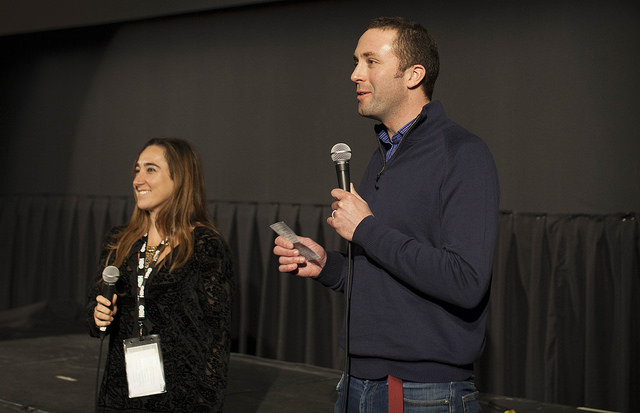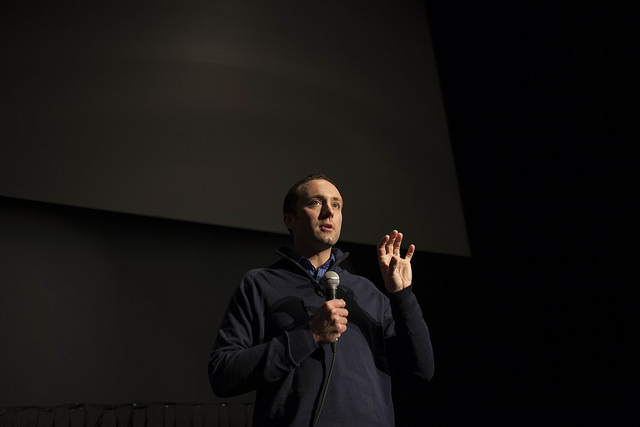Exploring Mars to Appreciate Earth Ian Cheney's 'Bluespace' examines the universal implications of terraforming


Written by Laura Dattaro
In less than a century, humans could turn Mars into a liveable planet. According to a NASA astrobiologist interviewed in Ian Cheney’s documentary Bluespace, we could pump Mars’ atmosphere full of greenhouse gases until it warmed up and liquid water flowed. Any life capable of living with that much carbon dioxide could flourish.
But should we? That’s the question Cheney raises with Bluespace, a strangely beautiful exploration of the life-giving element of water both here on Earth and elswhere in the universe. Through interviews with NASA scientists, science fiction authors, riverkeepers, environmentalists, and a sea captain, Cheney challenges the notion that making another planet more Earthlike–a process known as terraforming–could provide us with a new home if we destroy the one we already have.
Bluespace doesn’t follow a traditional narrative. Instead, the film hops around among people and places that each add a unique piece to the story of Earth and Mars. Cheney uses innovative visual techniques, like shooting through portholes, to make Earth itself feel like an alien planet, forcing the viewer to consider the actions humans are taking on Earth in the same way we think about exploring space. One scene opens with a fisheye view from within a vehicle that’s roving over a dry, red landscape, heavy clouds hanging overhead. To an untrained eye, it’s impossible to tell if this is Earth or Mars–audience members can be heard wondering aloud–until Cheney pulls back and shows a man standing in the desert.
Cheney first got the idea for the film while working in Red Hook, one of the Brooklyn neighborhoods that borders the Gowanus Canal. Built in 1869, the Gowanus is now listed as a Superfund site by the Environmental Protection Agency, making it one of the most polluted waterways in the country. The canal prompted Cheney to begin thinking about humanity’s relationship with water, he said after a Monday screening. “We spent a lot of time out on the waterways trying to soak it in. Or not soak it in, if you’re on the Gowanus Canal.”
New York’s relationship with water is the thread that ties Bluespace together. Though the city relied on access to water to become the international hub it is today, it’s also threatened by it. Hurricane Sandy has already demonstrated the disastrous power of sea level rise, while our own pollution destroys the marine life that supports fisheries and livelihoods. “Maybe in New York we’ve reverse-terraformed our city. We’ve made it less habitable for ourselves in a weird way,” Cheney said. “We now need to make another Earth here.”
Laura Dattaro is a freelance journalist in New York and has written for the Columbia Journalism Review, symmetry magazine, and others. Follow her on Twitter at @ldattaro

